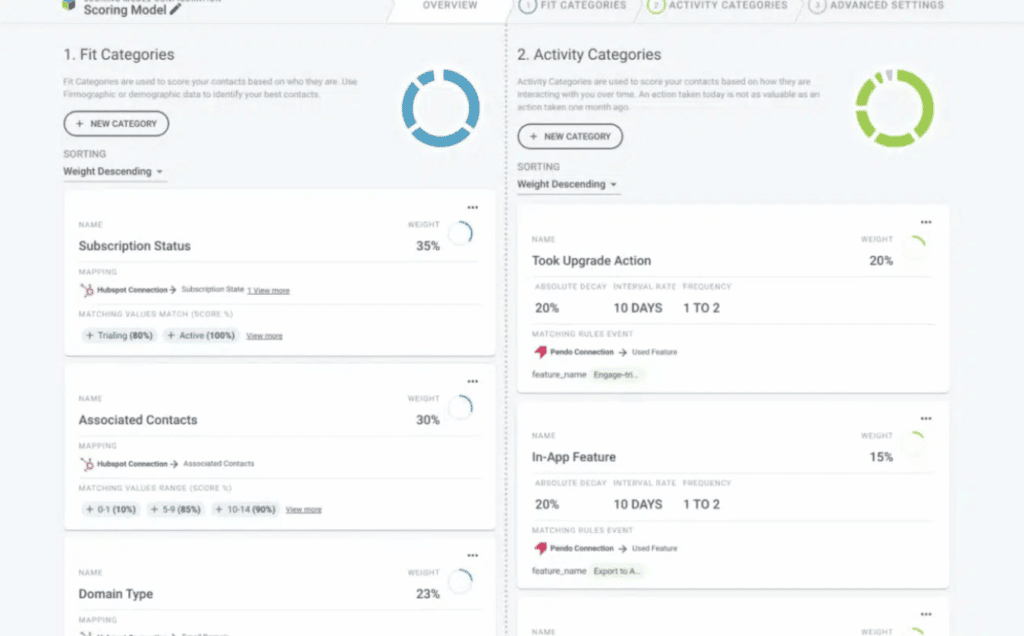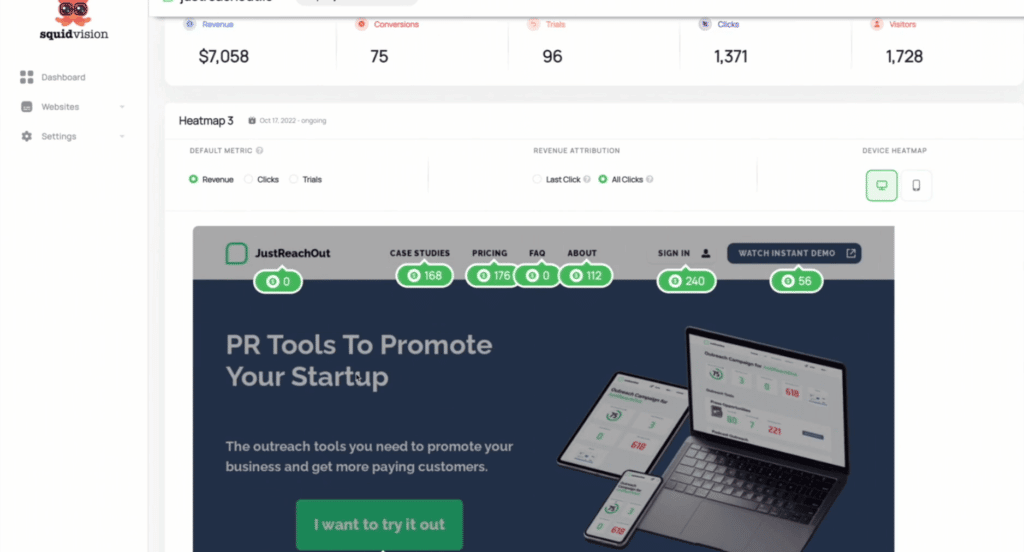

Unkover your competitors’ Marketing Secrets
Say goodbye to wasting hours on competitor analysis by equipping your team with an AI-driven, always-on competitive intelligence platform.


Say goodbye to wasting hours on competitor analysis by equipping your team with an AI-driven, always-on competitive intelligence platform.

Stay Ahead with AI-DRIVEN Competitive Intelligence
Unkover is your AI-driven Competitive Intelligence team delivering critical updates about your competitors the moment they happen:
Track your competitors website changes
Why spend all day stalking the competition when you don’t have to?
With Unkover, you’ll know instantly when your competitors tweak their messaging or shake up their pricing. No more endless scrolling through their sites or second-guessing your strategies.
Let us do the heavy lifting for you, ensuring you’re always in the loop by notifying you the moment a critical change happens on your competitor’s pages.
Sit back, relax, and keep winning—Unkover makes sure you’re not just in the game, you’re always a step ahead.


Read your competitors emails
Companies love updating their customers and prospects about relevant news, product updates, and special offers.
That juicy info from your competitors? It’s yours too. Unkover will automatically capture all their emails and bring them right to your doorstep—accessible to your entire team, anytime.
[COMING SOON: Our fine-tuned AI will sift through these emails, extract key information and send them over to the best team within your org. Less noise, more signal!]
We hear you! Unkover’s goal is not to flood you with tons of data points that no one in your team will ever read. We gather competitive intelligence from thousands of data sources and use AI to highlight actionable information to the right team in your company.
Say goodbye to noise. We’re 100% signal.
ROADMAP
We’re excited to get Unkover in your hands as soon as possible and keep building the best competitive intelligence tool with your precious feedback. The roadmap for the next few months is already exciting, so take a look!
While we build and deliver, here’s our promise to you: as an early tester and customer, you’ll lock in an exclusive bargain price we’ll never offer again in the future.

Spy on your competitors’ full marketing strategy: social, ads, content marketing, email flows, and more.

Track competitive Win/Loss analysis and build battle cards. Get alerted at every pricing change.

Get immediate alerts when competitors announce new features or major releases. Identify strengths and weaknesses from online reviews.

Get the competitive intelligence you need where you need it: Slack, eMail, MS Teams, Salesforce, Hubspot, Pipedrive and more.
slack integration
Unkover’s Slack integration lets you keep your whole team up to speed with your competitors’ updates.

Join now to lock in an exclusive 50% lifetime discount
For startups and small teams, it’s the essential toolkit you need to keep an eye on a select few competitors.

Up to 5 competitors

50 pages monitored

10 email workflows

3-day data refresh
$39
/per month
$ 79
50% discount
Billed annually
For growing businesses, it allows you to monitor more competitors, pages, and email workflows.

Up to 10 competitors

100 pages monitored

20 email workflows

1-day data refresh
$79
/per month
$ 159
50% discount
Billed annually
For large companies, it is tailored to meet the needs of multiple teams needing granular insights.

Custom number of competitors

Custom number of pages monitored

Custom number of email workflows

Hourly data refresh
Custom price
Billed annually

Often, horizontal SaaS companies overwhelm first-time users with vast features and end up struggling to get them to reach the “aha” moment.
One key to successfully onboard users is to treat this elusive “aha” moment as a series of valuable moments in the onboarding flow, not a singular event.
In this guide, you’ll learn what the “aha” moment really is. We’ll also feature three aha moment examples to illustrate this new concept.
An “aha” moment is a series of valuable moments a user goes through to experience the value of your product, often in a free trial or freemium plan.
There are three key milestones to achieving the “aha” moment, according to Ramli John, in his book, Product-Led Onboarding:
We’ve got loads to unpack here. Let’s illustrate how this looks with a contact scoring tool like Breadcrumbs.
Notice how an “aha” moment is not a singular event. And note again how it begins before the user becomes a customer.

The “aha” moment is a series of steps that form a value path.
The more users reach the activation event, the more you increase trial-to-paid conversions. Consider using a fully featured contact scoring system like Breadcrumbs to identify these sales-ready leads.
Here’s how it works:
All scoring information will be sent back to your CRM, notifying you of every sales opportunity.

You can also use Breadcrumbs to identify other qualified leads (e.g., product qualified leads), customers with cross- and upsell potential, and churning customers.
Grab your free account to increase your conversion rate across the entire customer journey today.
In this section, we further break down what the value moments look like in three horizontal SaaS companies.

How Sendlane’s “aha” moment looks like:
Sendlane has come a long way.
Originally an email marketing platform, it grew into a robust eCommerce marketing automation suite with a range of features: SMS/MMS, website pop-ups, and a dynamic review collection tool.
Jimmy Kim, CEO and founder of Sendlane, discovered his product’s “aha” moment after interviewing his sales prospects and customers.
On top of asking about their struggles and goals, he’d also probe deeper into customer objections. “If they don’t want to buy today, I’d ask them why,” says Kim. “You need to learn what will make them switch.”
More importantly, the CEO stresses, ensure you’re solving a problem for a specific user segment. “Identifying and focusing on who you’re building for are very important.”
Based on our conversations with marketing and sales leaders, we learned early on: businesses that chase the wrong ideal customer profile (ICP) end up wasting billions every year.
Use a tool like Reveal to check if your revenue marketing team is focusing on the right customer segment.
Analyze customer data across your marketing, sales, and product stacks to highlight the attributes and actions that accelerate revenue today.
Here’s how you can get started:
You’ll end up with a dashboard similar to the one below. Note how it shows a detailed list of industries you should target (e.g., SaaS companies are the most profitable segment, having converted over 60%).

Update your ICP accordingly and share it widely with everyone in the revenue marketing team.
Grab your free Reveal account to identify your most profitable customers today.

How Wordable’s “aha” moment looks like:
Wordable over-served its wrong market and underserved its right market in the early days.
The team realized their best customers were not solo bloggers, but large companies publishing content at scale.
“Our in-app user metrics helped us understand how frequently people were using our product and how long they were using it for,” shares Jeremy Moser, the co-owner and advisor of the one-click publishing software.
While the former used the product only once a month, the latter were using it daily for longer periods of time.
“The metrics gave us a moment of clarity into our product’s value.”
Note: this goes back to our previous point. You want to double-, triple-check you’re going after the right customer segment. Grab your free Reveal account to focus on your most profitable customers today.
Wordable’s pivot to bigger companies impacted its product and pricing models. Not only did the startup increase its pricing, but it also took on a hyper-focused approach to feature development.

How SquidVision’s “aha” moment looks like:
SquidVision is a revenue heatmap software that shows how much revenue your individual clicks and buttons are generating.
Founder Adam White discovered his product’s “aha” moment in demo video calls:
“Because our feature doesn’t exist in any other heatmap software, it’s critical we show that to the customer as soon as possible.
We saw the expression and the part of the demo where they responded positively.
Often it would be obvious because for the first part of the demo, the customer would just listen. But when the aha moment came, they would make an audible confirmation that they now understood what the app does and why it’s valuable”
Adam White, founder of SquidVision, on the moment customers recognized his product’s aha moment
The product demo isn’t the only channel to gather customer feedback. You can also send surveys to identify which features resonate.
White recommends these two simple questions:
Analyze the common themes.
Highlight the popular features in your product’s in-app user onboarding sequence.
You’ll also want to capture the voice of customer data from the survey and include them in your copy, content, and sales pitch.
The “aha” moment starts before users become customers. To activate them in the onboarding process, create a series of valuable moments that lead them to experience the value of your product.
Of course, analyzing analytics in user onboarding alone will not reveal your product’s “aha” moment. It also requires in-depth conversations with your best customers.
So do that!
And once you’re ready to improve your trial-to-paid conversion, grab your free Breadcrumbs account here.
Our fully featured contact scoring platform gathers your existing marketing, sales, product, and CX data into one place.
Use Breadcrumbs to identify all qualified leads, at-risk customers, and buyers with upsell potential across the entire user journey, with zero guesswork.

Long gone are the days of selling to C-suite executives. Or is it? Today, the…
An “aha” moment is a series of valuable moments a user goes through to experience the value of your product.
In the book Product-Led Onboarding, the “aha” moment is broken down into three key milestones: moment of value perception, moment of value realization, and moment of value adoption.
Most of the startups we spoke to recommend analyzing in-app user metrics, video demo calls, and customer interviews.
This would require a whole new article! In general, focus on engagement metrics and retention rates.